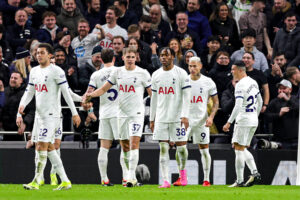Welcome to the new series of articles from Last Word on Football. This series looks at the grounds that are sadly no longer with us. Grounds that are famous not only in their particular country but also around the world. Grounds that will always have a special place in the hearts of a particular team’s supporters and fans of football alike. Many will have loved them, some may have hated them; however, they could never be forgotten. Today, we look at Sunderland’s Roker Park
Roker Park was a ground that stood for 99 years and was the home of Sunderland. It gave us countless classic matches and many more memories, not only to those that supported the team but fans from far and wide.
Never to be Forgotten Football Grounds: Sunderland’s Roker Park
Roker Park: The Opening
After Sunderland Association Football Club was formed in 1879, they would play at several different grounds before finding a home that would last them for 99 years. On September 10th, 1898, Roker Park was officially opened. On the same day, the first game would be played. Sunderland welcomed Liverpool to mark the opening of their new ground. The red and whites of Sunderland won the game one-nil in front of 26,000 fans.
Roker Park was considered at the time one of the best grounds in the country. Its main stand had 3000 seats with the opposite stand and those behind the goals standing room only. At this time, the stands had yet to be named; however, in due course, the stands would be named with many fans having their favourites out of the famous Fulwell and Roker Ends or The Clock Stand. Throughout its life, Roker Park would host many glorious and inglorious games and welcome thousands of fans, many who would call it home.
Early Days
The early years of Roker brought a fourth and fifth league title, some near misses and an FA Cup Final. As the years went by, the capacity of the ground was not sufficient for the amount wanting to attend. In 1912 the first piece of major reconstruction took place. The famous Roker End was born, a huge terrace that held 17,000 fans. At this time, the capacity jumped up to 50,000.
As the club continued to battle for honours but coming up short on several occasions, a further extension took the capacity up to 60,000. In 1929 the most famous name in football architecture, Archibald Leitch, was given the job of designing a new main stand. The structure cost £25,000, the equivalent of £1.5 million today. The design would also include Leitch’s trademark, a criss-cross lattice steelwork balcony. The stand ran the full length of the pitch and stood, almost unaltered until the end. The lattice steelwork now has a place at Sunderland’s current home, the Stadium of Light.
Record Crowd and Last League Title
1933 brought Sunderland’s record crowd. 75,118 crammed into Roker Park to witness a FA Cup quarter-final against Derby County. With so many in attendance, the game was stopped several times to move supporters off the sides of the pitch. Three years later, the club won its sixth and last league title. The following year came the first of two FA Cup victories while the club were at Roker Park.
In 1936 Archibald Leitch was once again commissioned to design a stand by the club. This time the stand opposite the one built several years earlier. A 16,000 capacity stand known as The Clock Stand was opened in September 1936.
War Damage, World Cup and More Improvements
Due to shipyards being a prominent part of the industry in Sunderland, the town was a target for German bombers during World War II and suffered heavy air raids. Roker Park itself was not as badly hit as other areas. Even so, the clubhouse was destroyed, a police officer was sadly killed when walking around the stadium and a crater was left in the pitch.
Floodlights were installed in 1952, and when England were awarded the 1966 World Cup, Roker Park was an obvious choice to host games. To prepare for the tournament, the stadium received a makeover. Seats were installed in the top half of The Clock Stand (which would remain until closure) and a roof and temporary seats were installed in the Fulwell End behind the goal. Due to the temporary seating, the capacity was reduced to just over 40,000. Sunderland would host four games during the World Cup, three group games and a quarter-final between the Soviet Union and Hungary.
The Roker Roar
The Roker Roar was famous throughout football, especially when the capacity was at its largest. Even in later years, the roar from the fans at kick-off could and often would strike fear into any visiting team.
A visiting journalist covering the 1973 FA Cup tie against Manchester City was so convinced that the roar of the crowd was amplified somehow, he went back to the ground to look for evidence the following night. When asked what he was doing the journalist said:
“I’ve been reporting on top-class football all my life, but I’ve never heard noise like that. It’s a marvellous gimmick – where are the hidden amplifiers?”
“Amplifiers,” replied the groundsman. “There’s no bloody amplifiers here mate. What you heard last night was the Roker Roar!”
Classic Games
Many classic games were witnessed at Roker Park. From the FA Cup victory over Manchester City in 1973 which was voted the Match of the Century, to epic victories over bitter rivals Newcastle United. An unofficial 80,000 crowd for a cup replay against Manchester United to mauling the then-current league champions Arsenal 7-1. Defying the odds against better opposition to great games under the lights. Roker Park really saw it all.
These and so many others will live in the memory of fans forever and will be passed along with other personal memories on to future generations who were unlucky not to witness the ground first hand.
Decline
Due to a decline in fortunes and the increasing importance for supporter safety, Roker Park, like the form of the team, began to decline. The huge and intimidating Roker End was to suffer the most. In 1982 it was now deemed unsafe and a large part of it was demolished. Over the years with less money available to maintain it and various safety measures incorporated, the capacity of the once-mighty Roker Park began to tumble. During the stadium’s final season in 1996/97, the capacity was down to just over 22,000.
Sunderland’s Roker Park: The End
It ended where it began, with a match against Liverpool. The result on the night was the same as was all those years ago, one-nil to Sunderland. The game, however, was a sideshow. This was about the ground that gave so many memories that would never fade. It was a night to remember, a night for fans and former players and staff to look back at the great and sad times. Many tears were shed with many staying as long as possible after the game had finished. For one last time, they wanted one last look around at a place many called home.
After more than 1800 games, Roker Park closed its doors for the final time. For those who went to the ground on many occasions, it was like losing a loved one on that final evening. Sunderland left Roker for the Stadium of Light with a record of 1,445 league games without defeat.
Sunderland’s FA Cup-winning manager Bob Stokoe said what many fans and players felt: “There will never be anywhere like Roker Park” He was right.
What Happened Next?
The ground was sold to help finance Sunderland’s new stadium, the Stadium of Light. After Roker Park was sadly demolished, housing was built on the site. Street names on the site are Promotion Close, Clockstand Close, Goalmouth Close, Midfield Drive, Turnstile Mews and Roker Park Close. Roker Park will always be in the hearts of Sunderland fans.
Main Photo
Embed from Getty Images






